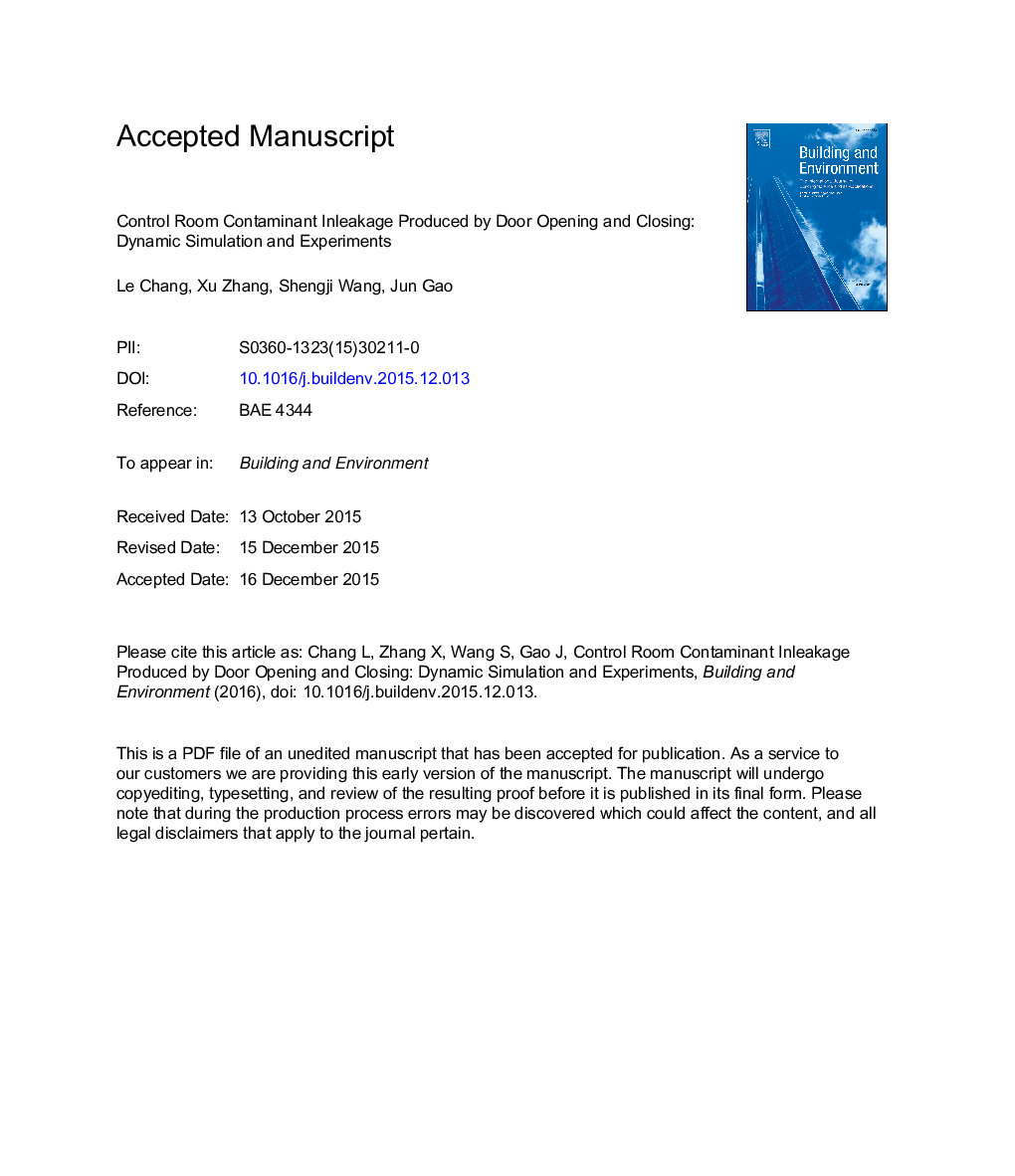| Article ID | Journal | Published Year | Pages | File Type |
|---|---|---|---|---|
| 6699494 | Building and Environment | 2016 | 33 Pages |
Abstract
When the entrance door is opened and closed, toxic or radiological contaminants can potentially migrate into the main control room of a nuclear power plant, which will damage the personnel safety. Therefore, this paper aims to investigate the inleakage flow induced by the hinged door opening and closing, and to determine the total inleakage volume. Unsteady CFD simulations using RNG k-É model and full-scale experiments were performed in an inner-outer model. The air in the outer room (the unfiltered air) was marked with tracer gas, so that the inleakage air could be distinguished. Dynamic meshes were employed to simulate the movement of the hinged door with the various rotating times (from 3 s to 8 s). It was found that inleakage flow pattern was controlled by the door's front face. During door opening, the front face induced and drew in the inleakage air from the outer room. While, during door closing, the inleakage air was pushed and compressed by the front face and flowed round the door edges to the back face. Moreover, the total volume of inleakage air was found to be constant (0.602 ± 0.006 m3) even with varying rotating times, and full-scale experiments validated this inleakge volume. These results include key inleakage data, and provide important information for future control room habitability studies.
Related Topics
Physical Sciences and Engineering
Energy
Renewable Energy, Sustainability and the Environment
Authors
Le Chang, Xu Zhang, Shengji Wang, Jun Gao,
